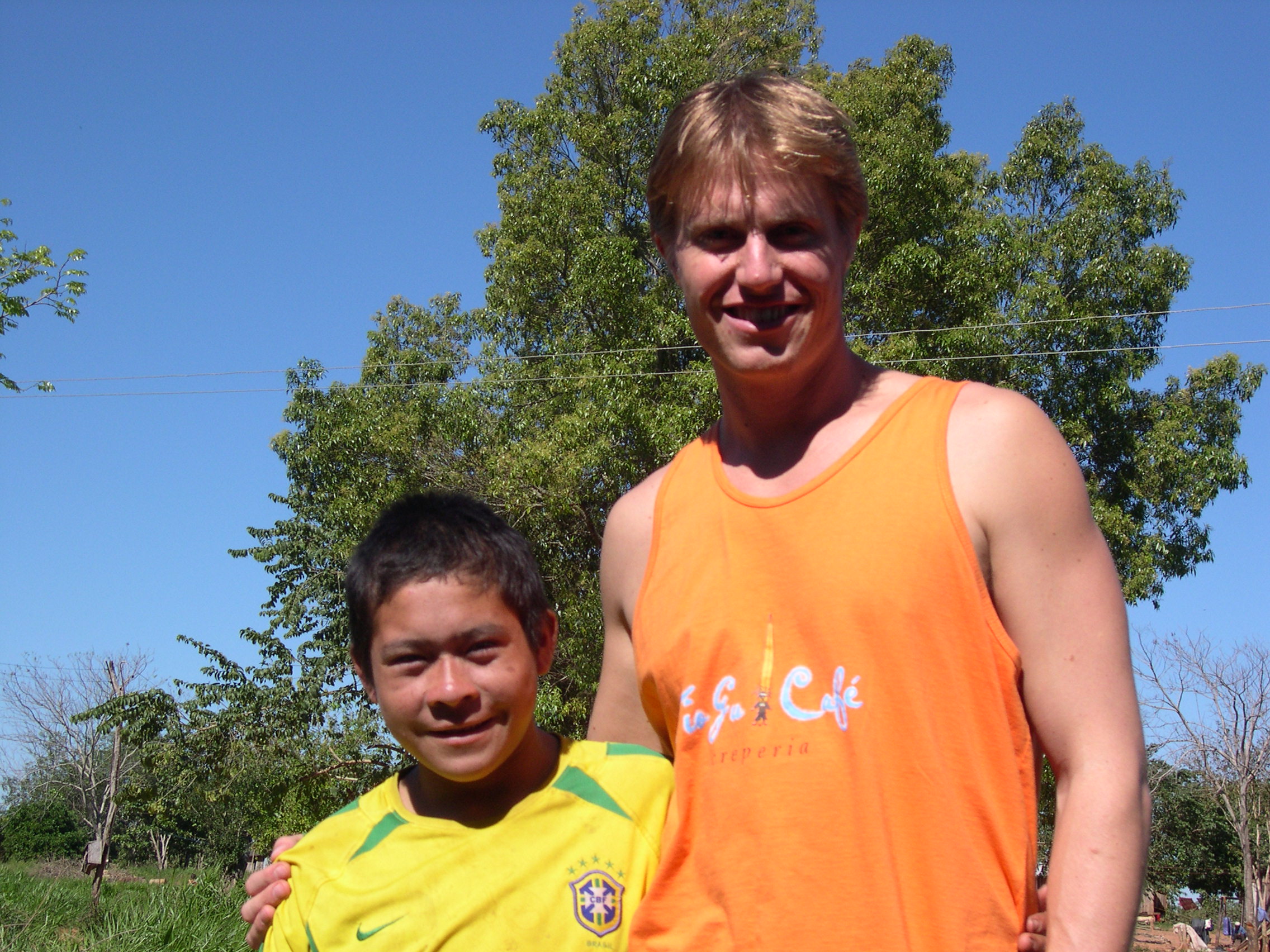
Research and Teaching Interests
I am primarily a human behavioral ecologist, and my
research attempts to understand
behavioral and life-history variation among
humans from
a
socioecological and evolutionary perspective (see PDFs below). My
research and teaching goals focus on situating modern human variation
in development, behavior and life-history against a backdrop of
variation in other primates. For example, I am especially interested in
using
comparative analyses to study the evolution of long, slow-growing (yet
large-brained) juvenile periods in humans as this is arguably the most
derived human trait, driven by our early age at weaning and delayed
growth spurt. In another line of inquiry,
research with colleague Marcus Hamilton has
uncovered a self-similar (or fractal-like) social structure in
hunter-gatherer societies. Moreover, humans in a wide variety of
contexts show increasingly efficient use of territory in larger
populations which, along with the self-similarity in social structure,
intriguingly suggest that human societies can be considered complex
adaptive systems, perhaps even analogous to "super-organisms" in some
regards.
In addition to statistical analyses
and optimality modeling, I also enjoy fieldwork in South America. I
have conducted
research in
Brazil, Paraguay, Bolivia, and Suriname with hunter-gatherers and
subsistence horticulturalists. I loosely collaborate with an
international team of researchers working around the globe and who
share a common interest in
quantifying age-specific rates of growth, fertility and mortality. My colleagues and I have found evidence that high
mortality associates with population density, faster body growth, and
earlier menarche and reproduction. There is also evidence for a
trade-off between number and size of offspring across and within
societies, an empirical pattern well-supported in other animals. I
use these growing databases as a keystone for introducing students to a
wide
variety of topics that relate to the evolution of growth, senescence,
mating and parenting. Opportunities
abound in South America and around the world for students to conduct
research in some of these ongoing fieldsites as well as develop new
fieldsites in other communities. In my
courses, I strongly
encourage
students to gain hands-on
experience in data collection and analyses, placing confidence in their
ability to conduct high-quality, publishable research.
13. Walker, R. S., M. Gurven, O. Burger, M. J. Hamilton (under review) The trade-off between number and size of offspring in humans and other primates.
11. Hamilton, M. J., B. Milne, R. S. Walker, O. Burger, and J. Brown (2007) The complex nature of hunter-gatherer social networks. Proceedings of the Royal Society of London, Series B 274:2195-2202.
10. Hamilton, M. J., B. Milne, R. S. Walker, and J. Brown (2007) Nonlinear scaling of space use in human hunter-gatherers. Proceedings of the National Academy of Sciences, USA 104:4765-4769.
9. Hill, K., A. M. Hurtado, and R. S. Walker (2007) High adult mortality among Hiwi hunter-gatherers: Implications for human evolution. Journal of Human Evolution 52:443-454.7. Walker, R. S., M. Gurven, K. Hill, A. Migliano, N. Chagnon, R. De Souza, G. Djurovic, R. Hames, A. M. Hurtado, H. Kaplan, K. Kramer, W. J. Oliver, C. Valeggia, and T. Yamauchi (2006) Growth rates and life histories in twenty-two small-scale societies. American Journal of Human Biology 18:295-311 (Feature Article).
6. Walker, R. S., K. Hill, O. Burger, and A. M. Hurtado (2006) Life in the slow lane revisited: Ontogenetic separation between chimpanzees and humans. American Journal of Physical Anthropology 129:577-583.
5. Gurven, M. and R. S. Walker (2006) Energetic demand of multiple dependents and the evolution of slow human growth. Proceedings of the Royal Society of London, Series B 273:835-841.
4. Burger, O., M. Hamilton, and R. S. Walker (2005) The prey as patch model: A marginal gains curve for vertebrate prey. Journal of Archaeological Science, 32:1147-1158.
3. Walker, R. S. and K. Hill (2003) Modeling growth and senescence in physical performance among the Ache of eastern Paraguay. American Journal of Human Biology, 15:196-208.